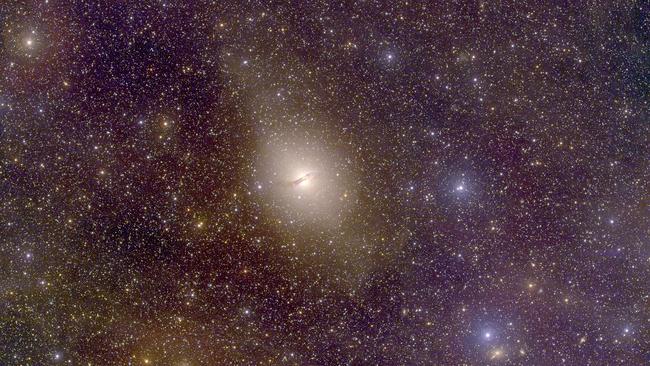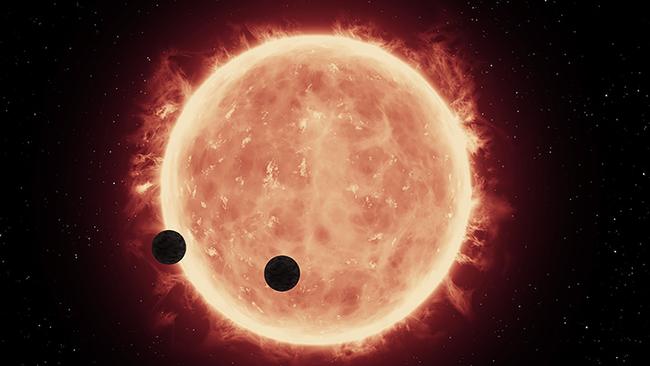Dwarf galaxies threaten standard model of cosmology
A Canberra astronomical discovery threatens to challenge the accepted theory of how the universe formed.

The discovery of an unexpectedly well-behaved troupe of dwarf galaxies threatens to torpedo the dominant theory of the history of the universe.
An international astronomy team has found that mini-galaxies orbiting the full-blown galaxy Centaurus A, about 13 million light years away, are rotating in an ordered way in a disc-shaped plane around their parent galaxy.
The discovery, reported this morning in the journal Science, conflicts with the standard model of cosmology — a theory that has stood largely unchallenged for two decades and posits, among other things, that about one-fifth of the universe is composed of dark matter.
According to the model, most dwarf galaxies should orbit their hosts in a random fashion. But a few years ago, astronomers found that dwarf galaxies around the Milky Way and neighbouring Andromeda were also orbiting within planes.
Team member Helmut Jerjen, of the Australian National University in Canberra, said astronomers had assumed these two big galaxies were the “odd ones out”.
“It seems our Milky Way and Andromeda are normal galaxies after all,” he said.
“Spinning pancake-like systems of satellite galaxies are more common than scientists expected. Even the best cosmological simulations struggle to explain the phenomenon of these small galaxies revolving in one direction around host galaxies.”

Dr Jerjen said the bulk of the 50-odd dwarf galaxies around the Milky Way were rotating in a disk that was almost perpendicular to their parent galaxy’s alignment.
“Most of the dwarf galaxy candidates that my colleagues and I observed around Centaurus A are arranged this way, and it’s a similar case with at least half of them around Andromeda.”
Lead author Oliver Müller, of the University of Basel in Switzerland, said most of the universe’s large galaxies had probably experienced near misses or collisions with other star clusters at least once in their lifetimes.
He said “co-rotating” dwarf galaxy systems formed during such interactions did not fit with the normally reliable modelling of dark matter’s gravitational effects, as simulated using the standard model of cosmology.
“Coherent movement seems to be a universal phenomenon that demands new explanations,” Dr Müller said.
University of Texas at Austin astronomer Michael Boylan-Kolchin said the findings added weight to calls to “search for an alternative model”. He said the latest discovery did not mean the standard model was in crisis, “but the results raise the stakes”.
In a separate development, the ANU will put the standard model to the test as a major player in a new drive to measure the rate of the universe’s expansion.
ANU’s Matthew Colless will co-lead the “Taipan” galaxy survey, which is due to start midyear harnessing new technology installed on the refurbished UK Schmidt Telescope in northwestern NSW.
“The Taipan survey will map the entire southern hemisphere and part of the northern hemisphere, and determine both the age and size of the universe with extraordinary precision,” Professor Colless said.
“To do so, it will measure the position of two million galaxies and the velocities for 100,000 of those galaxies.”
The ANU said the project could resolve a “nagging” discrepancy in estimates of the current rate of expansion of the universe, as obtained using two different methods. Professor Colless said that if the discrepancy persisted despite the more precise measurements, it would be another “chink” in the standard model.



To join the conversation, please log in. Don't have an account? Register
Join the conversation, you are commenting as Logout